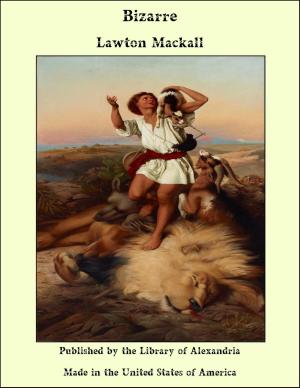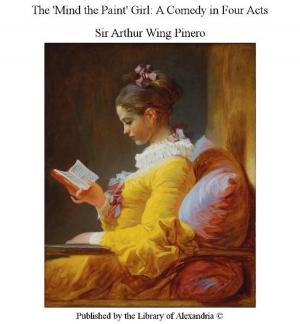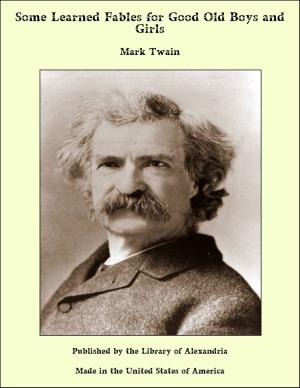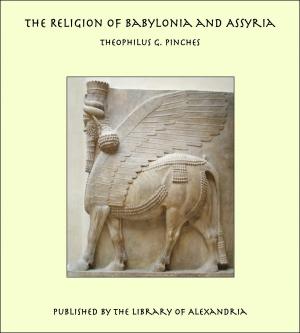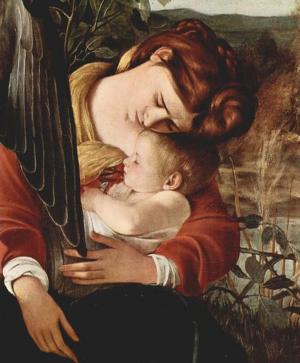Magic Songs of the West Finns: The Pre and Proto Historic Finns (Complete)
Nonfiction, Religion & Spirituality, New Age, History, Fiction & Literature| Author: | John Abercromby | ISBN: | 9781465593207 |
| Publisher: | Library of Alexandria | Publication: | March 8, 2015 |
| Imprint: | Language: | English |
| Author: | John Abercromby |
| ISBN: | 9781465593207 |
| Publisher: | Library of Alexandria |
| Publication: | March 8, 2015 |
| Imprint: | |
| Language: | English |
In this country the term Finn is generally restricted to the natives of Finland, with perhaps those of Esthonia thrown in. But besides these Western Finns there are other small nationalities in Central and Northern Russia, such as the Erza and Mokša Mordvins, the Čeremis, Votiaks, Permians, and Zrians, to whom the term is very properly applied, though with the qualifying adjective—Eastern. Except by Folklorists, little attention is paid in Great Britain to these peoples, and much that is written of them abroad finds no response here, the 'silver streak' acting, it would seem, as a non-conductor to such unsensational and feeble vibrations. Although the languages of the Eastern and Western Finns differ as much perhaps among themselves as the various members of the Aryan group, the craniological and physical differences between any two Finnish groups is very much less than between the Latin and the Teutonic groups, for instance. All the Finns live nearly under the same latitudes, and in pre- and proto-historic times, which are not so very remote, the differences in customs, religious and other beliefs, could not have been very great. This is important; it allows us to supplement what is missing or defective in one Finnish group by what is more complete in another, with far greater certainty than when dealing under similar circumstances with the Aryan-speaking groups. In the first five chapters of the first volume I have tried, with the combined aid of craniology, archæology, ethnography, and philology, brought up to date, to sketch as succinctly as possible the pre- and proto-historic history of the Eastern and Western Finns, showing the various stages of civilisation to which they successively advanced after contact with higher civilisations, at different periods of their evolution from neolithic times to the middle ages. Chapters six and seven contain an analysis of the beliefs of the Western Finns, so far as they can be gathered from the text of the Magic Songs in the second volume; and a perusal of them will facilitate the comprehension of the Magic Songs themselves. The second volume, containing 639 magic songs, some of considerable length, classed under 233 headings, is a translation of a very large portion of the Suomen kansan muinaisia Loitsurunoja, edited and published by the late Dr. Lönnrot in 1880. As the translation was made for Folklorists it is as literal as possible, without additions, without subtractions, and the vocabulary employed is in conformity with the subject, with the humble social status and homely surroundings of the original composers. The metre of the original is the same as in the Kalevala, which cannot be reproduced in a language like English, where the ictus of the metre has to coincide with the natural stress-accent of the words. But where it could be done without loss of exactness a certain rhythm, generally three beats to a line, is given in the translation, though to save space the lines are printed in prose form.
In this country the term Finn is generally restricted to the natives of Finland, with perhaps those of Esthonia thrown in. But besides these Western Finns there are other small nationalities in Central and Northern Russia, such as the Erza and Mokša Mordvins, the Čeremis, Votiaks, Permians, and Zrians, to whom the term is very properly applied, though with the qualifying adjective—Eastern. Except by Folklorists, little attention is paid in Great Britain to these peoples, and much that is written of them abroad finds no response here, the 'silver streak' acting, it would seem, as a non-conductor to such unsensational and feeble vibrations. Although the languages of the Eastern and Western Finns differ as much perhaps among themselves as the various members of the Aryan group, the craniological and physical differences between any two Finnish groups is very much less than between the Latin and the Teutonic groups, for instance. All the Finns live nearly under the same latitudes, and in pre- and proto-historic times, which are not so very remote, the differences in customs, religious and other beliefs, could not have been very great. This is important; it allows us to supplement what is missing or defective in one Finnish group by what is more complete in another, with far greater certainty than when dealing under similar circumstances with the Aryan-speaking groups. In the first five chapters of the first volume I have tried, with the combined aid of craniology, archæology, ethnography, and philology, brought up to date, to sketch as succinctly as possible the pre- and proto-historic history of the Eastern and Western Finns, showing the various stages of civilisation to which they successively advanced after contact with higher civilisations, at different periods of their evolution from neolithic times to the middle ages. Chapters six and seven contain an analysis of the beliefs of the Western Finns, so far as they can be gathered from the text of the Magic Songs in the second volume; and a perusal of them will facilitate the comprehension of the Magic Songs themselves. The second volume, containing 639 magic songs, some of considerable length, classed under 233 headings, is a translation of a very large portion of the Suomen kansan muinaisia Loitsurunoja, edited and published by the late Dr. Lönnrot in 1880. As the translation was made for Folklorists it is as literal as possible, without additions, without subtractions, and the vocabulary employed is in conformity with the subject, with the humble social status and homely surroundings of the original composers. The metre of the original is the same as in the Kalevala, which cannot be reproduced in a language like English, where the ictus of the metre has to coincide with the natural stress-accent of the words. But where it could be done without loss of exactness a certain rhythm, generally three beats to a line, is given in the translation, though to save space the lines are printed in prose form.




